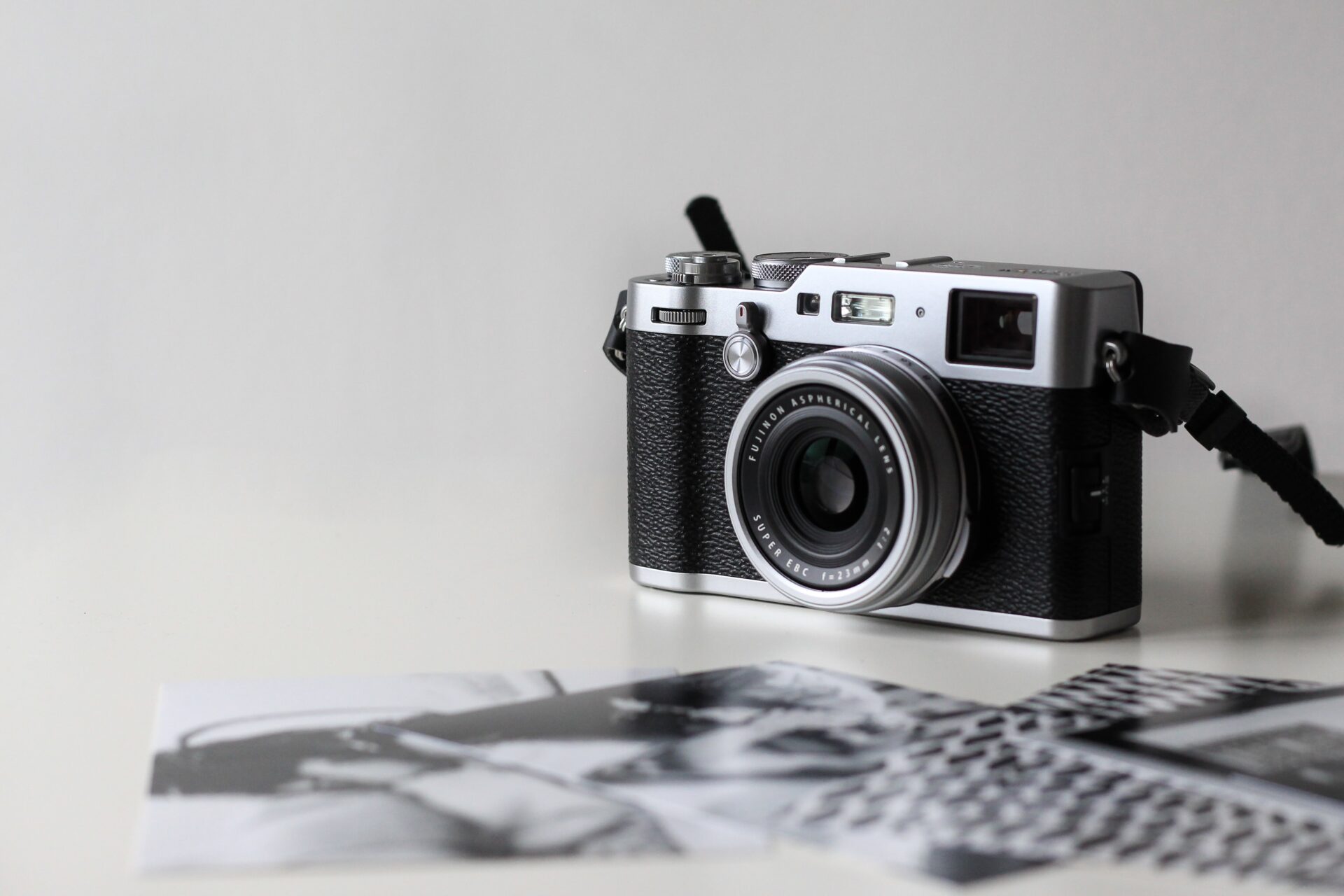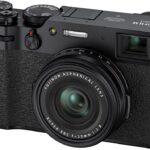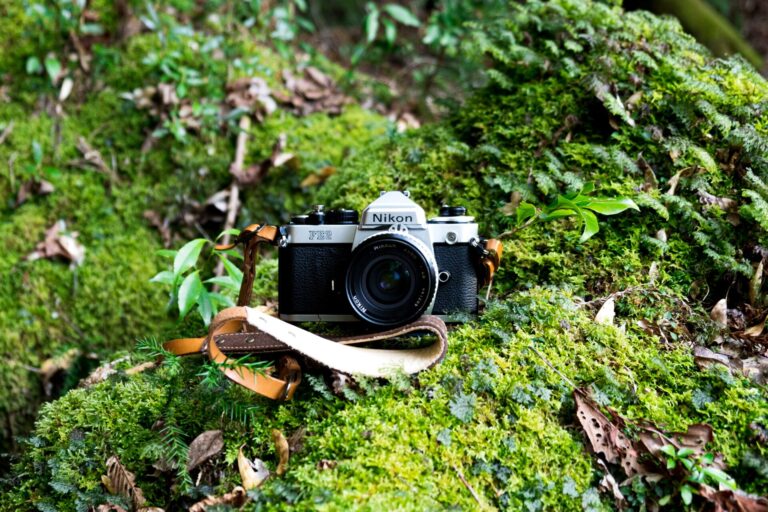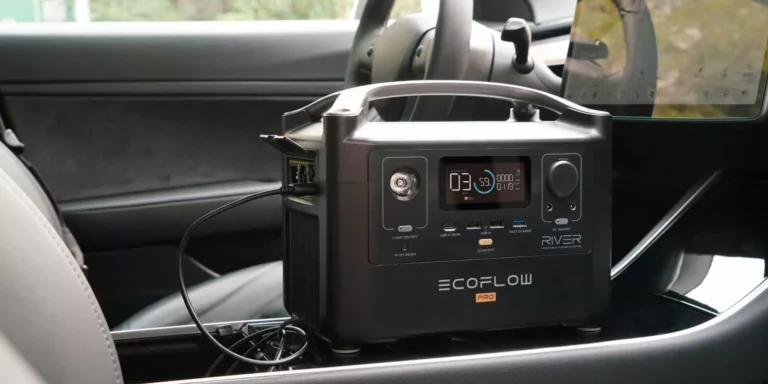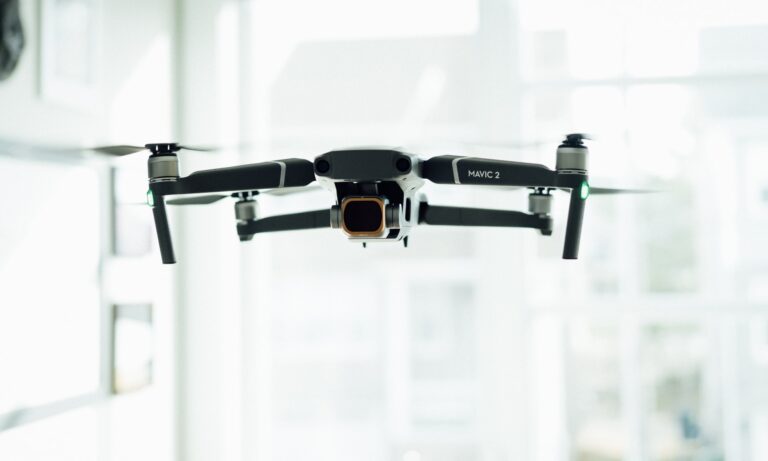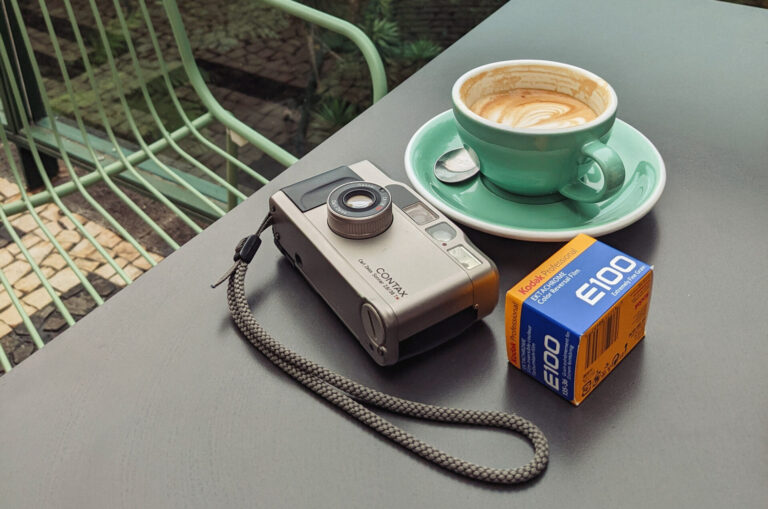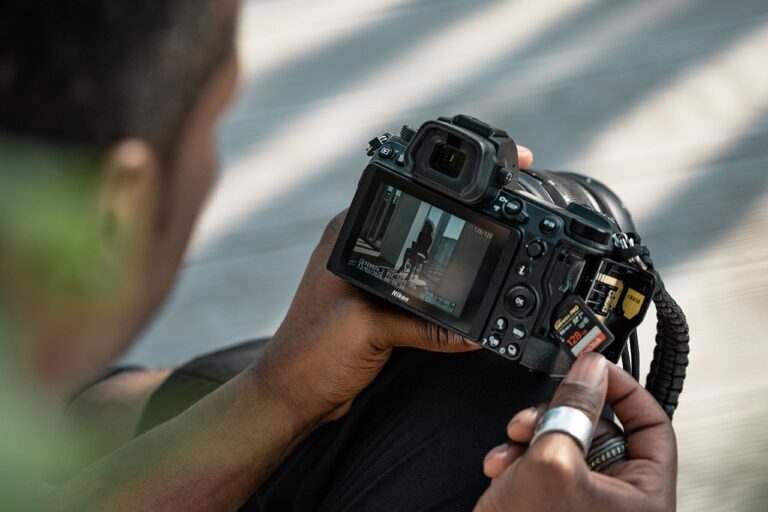Fujifilm X100V Review: Is It Worth the Hype in 2024?
Fujifilm X100V
$2,099.99Pros
- Impressive image quality and colors
- Compact and stylish design
- Hybrid viewfinder allows for flexible shooting
- Excellent low-light performance
- 4K video recording capabilities
Cons
- Expensive price point
- Limited focal length with fixed lens
- No in-body image stabilization
- No weather-sealing
- Average battery life
Released in February 2020, the Fujifilm X100V is the fifth iteration of the iconic X100 series, known for its compact size, classic design, and high-quality images.
In this review, we’ll dive into the unique features of the X100V, including its advanced hybrid viewfinder and versatile lens, its video capabilities, and how it compares to other cameras in its class.
We’ll also explore why the X100 series has become a favorite among street photographers, travel photographers, and anyone who values a discreet, portable camera that doesn’t sacrifice image quality.
So, whether you’re looking for a camera for your next adventure or just a reliable and stylish tool for everyday photography, let’s see if the X100V fits you.
Page Contents
Unique Features of the Fujifilm X100V
The Fujifilm X100V is a compact camera that packs a punch for unique features. One of its most notable features is the hybrid viewfinder, which combines an electronic viewfinder (EVF) and an optical viewfinder (OVF) for a versatile shooting experience. The EVF is ideal for precise framing and checking exposure, while the OVF provides a more natural and immersive shooting experience, allowing you to see the world around you as you shoot. You can switch between the two viewfinders with a simple lever on the front of the camera and even overlay a digital frame on top of the OVF to help with composition.
Another standout feature of the X100V is its lens, a 23mm f/2 prime lens that’s equivalent to a 35mm lens on a full-frame camera. This lens is fast and sharp, with excellent depth of field control and a versatile focal length that’s ideal for street, travel, and documentary photography. The lens also features an aperture ring that lets you adjust the aperture manually, just like on a classic film camera.
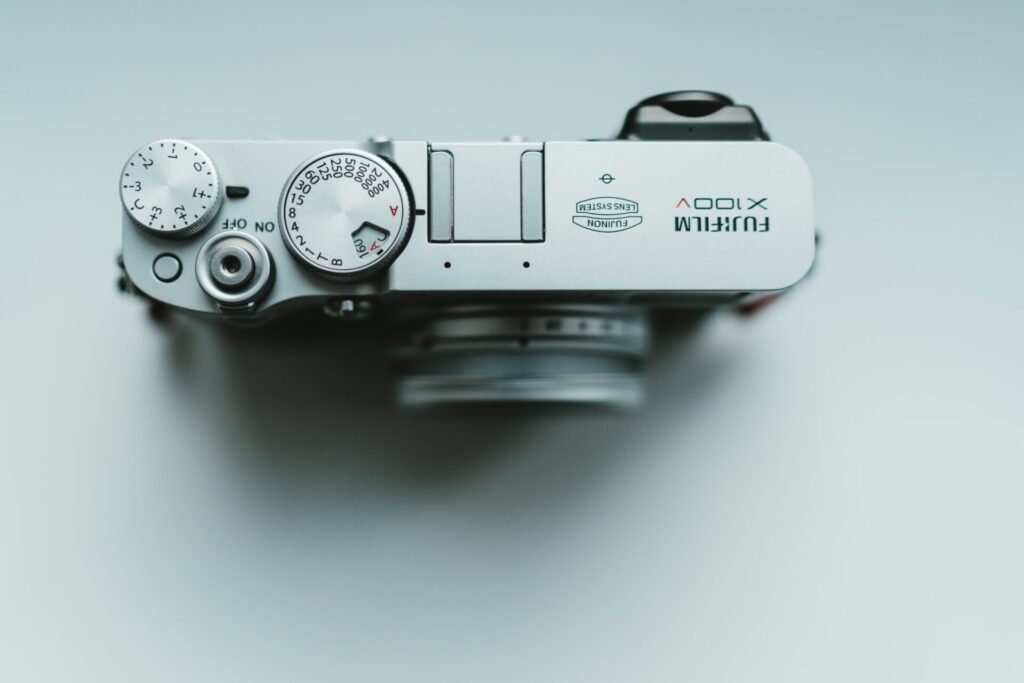
The X100V also has a classic design that’s both stylish and functional. The camera’s body is made of durable magnesium alloy, with a textured surface that’s easy to grip. The top plate features classic dials for shutter speed and exposure compensation, while the lens barrel has an aperture ring and a focus ring that provide tactile feedback when you’re adjusting settings. The camera even has a built-in ISO dial, which lets you adjust the ISO without having to dive into menus.
In addition to its classic design, the X100V also boasts modern video capabilities. The camera can shoot 4K video at up to 30 frames per second, with advanced color and film simulation options for cinematic results. You can even use the hybrid viewfinder while shooting video, switching between the OVF and EVF as needed. The camera also has a microphone jack and the ability to record in F-Log, which is a flat profile that gives you more flexibility in post-processing.
Fujifilm X100V Video
The Fujifilm X100V is a camera that is well known for its still photography capabilities, but it also boasts impressive video capabilities. The X100V can shoot 4K video at up to 30 frames per second, with bit rates of up to 200 Mbps. This means that the camera can capture incredibly sharp and detailed footage, with a wide dynamic range that allows for greater flexibility in post-processing.
In addition to its high-quality video capture, the X100V also has a range of advanced video features. One of these features is F-Log recording, a flat profile that gives you greater flexibility in post-processing. F-Log preserves more information in the shadows and highlights, which can help you to recover details that might otherwise be lost in more contrasty scenes. This feature is particularly useful for those planning color grading or other post-processing work on their footage.
Another advanced video feature of the X100V is the ability to shoot at different frame rates. The camera can shoot at 24, 25, or 30 frames per second in 4K and at 50 or 60 frames per second in Full HD. This flexibility allows you to choose the frame rate that best suits your subject matter, whether you’re shooting fast-moving action or more slow-paced scenes.
Fujifilm X100V VS Fujifilm X100F
The Fujifilm X100V is the successor to the Fujifilm X100F, and there are several key differences between the two cameras. One of the most notable differences is the X100V’s upgraded lens. While both cameras have a 23mm f/2 lens, the X100V’s lens has been redesigned for improved sharpness and resolution. The X100V’s lens also features a new 9-blade aperture, which can create more pleasing bokeh effects in your photos.
Another significant difference between the X100V and X100F is the X100V’s upgraded hybrid viewfinder. While the X100F also had a hybrid viewfinder, the X100V’s viewfinder offers more versatility and customization options. The X100V’s viewfinder can switch between optical and electronic modes, allowing you to choose the best mode for your shooting situation. The viewfinder also offers improved resolution and a faster refresh rate, making it easier to track moving subjects.
Finally, the X100V also offers improved video capabilities over its predecessor. While the X100F was limited to 1080p video capture, the X100V can shoot 4K video at up to 30 frames per second. The X100V also has a microphone jack for improved audio quality, and it offers a range of advanced video features like F-Log recording and different frame rates.
Fujifilm X100V VS Sony RX1R II
The Fujifilm X100V and the Sony RX1R II are premium compact cameras offering excellent image quality and advanced features. One of the key differences between the two cameras is their lenses. The X100V features a 23mm f/2 lens, while the RX1R II has a fixed 35mm f/2 lens. This means that the X100V can capture wider shots, while the RX1R II is better suited for portraits and street photography.
Additionally, the X100V’s lens is a more modern design with improved sharpness and resolution, while the RX1R II’s lens has been praised for its beautiful bokeh and sharpness.
Another difference between the two cameras is their autofocus systems. The X100V uses Fujifilm’s hybrid autofocus system, which combines phase detection and contrast detection autofocus for improved speed and accuracy. The RX1R II also has a hybrid autofocus system, but it has been criticized for being slower and less reliable than the X100V’s autofocus. The X100V’s autofocus system also features face and eye detection, making it easier to capture portraits with sharp focus on your subject’s face.
The X100V and RX1R II differ in their video capabilities. While both cameras can shoot 1080p video, only the X100V can shoot 4K video at up to 30 frames per second. The X100V also has a microphone jack for improved audio quality, while the RX1R II does not. If video is an important consideration for you as a content creator, the X100V may be the better choice.
Fujifilm X100V VS Leica Q2
The Fujifilm X100V and Leica Q2 are both premium compact cameras with advanced features and image quality. However, the Leica Q2 is significantly more expensive than the X100V, which may be a deciding factor for many photographers. The Leica Q2 also features a larger full-frame sensor, which may offer slightly better image quality and low-light performance than the X100V’s APS-C sensor. However, both cameras can produce excellent image quality, and the X100V’s smaller sensor size allows for a more compact and portable design.
One of the key differences between the X100V and the Leica Q2 is their lens systems. The X100V features a fixed 23mm f/2 lens, while the Leica Q2 has a fixed 28mm f/1.7 lens. This means that the Leica Q2 is better suited for wide-angle shots, while the X100V’s lens is better for everyday use and street photography. Both lenses are high-quality and produce sharp, detailed images, but the X100V’s lens has been praised for its improved sharpness and resolution over previous models.
Another difference between the two cameras is their autofocus systems. The Leica Q2 features a contrast detection autofocus system, while the X100V has a hybrid autofocus system that combines both phase and contrast detection. The X100V’s autofocus system is faster and more accurate than the Leica Q2’s, making it easier to capture sharp images in a variety of shooting situations. The X100V also features face and eye detection autofocus, which can be particularly useful for portrait photography.
Fujifilm X100V VS Ricoh GR III
The Fujifilm X100V and the Ricoh GR III are both popular cameras for street photographers and content creators who want a compact and portable camera. While they share some similarities, they have a few key differences that set them apart.
One of the biggest differences between the two cameras is the lens. The X100V features a fixed 23mm f/2 lens, while the GR III has a fixed 18.3mm f/2.8 lens. The X100V’s lens is wider and faster, allowing for more versatility in shooting and better low-light performance. However, the GR III’s lens is sharper and has less distortion, which can be a plus for those who prioritize image quality.
Another difference is the viewfinder. The X100V has a hybrid viewfinder that can switch between optical and electronic modes, which some photographers prefer for its more traditional shooting experience. The GR III, on the other hand, only has an electronic viewfinder. However, the GR III’s viewfinder is higher in resolution and has a faster refresh rate, which can make it easier to compose shots.
The X100V is a bit larger and heavier than the GR III, but it also has a more classic design and build quality. The X100V has a solid metal body and dials for adjusting settings, which can give it a more premium feel. The GR III, on the other hand, is smaller and more minimalist in design. It’s also more affordable than the X100V, which can make it a more attractive option for those on a budget.
Travel photography with the Fujifilm X100V
Traveling with the Fujifilm X100V is a joy, as it is a compact and lightweight camera that can easily fit into your bag or pocket. Its classic design also makes it a stylish accessory to carry around while exploring new places. The camera’s unique features, including its hybrid viewfinder and 23mm f/2 lens, make it a versatile tool for capturing the sights and sounds of your travels.


City Photography
When it comes to city photography, the Fujifilm X100V excels in capturing the hustle and bustle of urban life. Its fast autofocus and responsive controls allow you to quickly capture candid moments, while its silent shutter ensures that you don’t disturb the local environment. The camera’s 23mm f/2 lens is also great for street photography, as it allows you to capture a wide perspective that can show the context of the cityscape around your subject.
Landscape photography
For landscape photography, the Fujifilm X100V’s 26.1 megapixel sensor and 23mm f/2 lens make it an excellent choice for capturing stunning vistas. Its compact size also makes it easy to carry around, even on long hikes or treks. The camera’s film simulation modes, including the popular “Classic Chrome” and “Acros” modes, can also add a unique touch to your landscape photos.
In Summary
After thoroughly reviewing the Fujifilm X100V camera, it’s safe to say that it’s a highly capable camera that’s worth considering for anyone who wants a compact, yet powerful camera for photography and videography.
The camera’s unique features, such as the hybrid viewfinder, 23mm f/2 lens, and classic design, make it stand out from the crowd. Additionally, the 4K video capabilities are a nice touch for content creators who want to shoot high-quality videos.
Compared to its predecessor, the Fujifilm X100F, the X100V has significant improvements in autofocus, ergonomics, and overall image quality. While it may be pricier than some other compact cameras, it’s still a good investment for those who value high-quality photos and a great user experience.
Pros
- Impressive image quality and colors
- Compact and stylish design
- Hybrid viewfinder allows for flexible shooting
- Excellent low-light performance
- 4K video recording capabilities
Cons
- Expensive price point
- Limited focal length with fixed lens
- No in-body image stabilization
- No weather-sealing
- Average battery life

